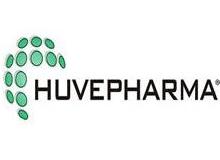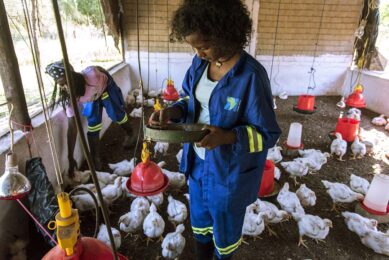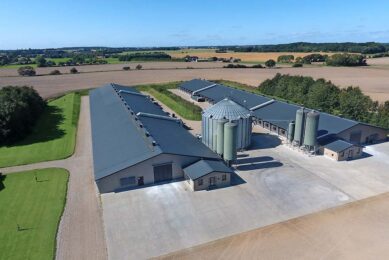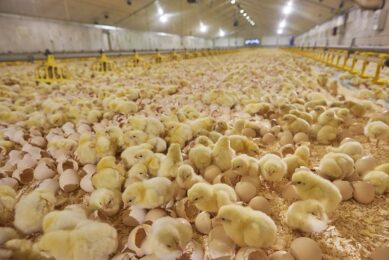Huvepharma kicks off first Int’l Veterinary Congress

Huvepharma has organised its first International Veterinary Congress in Albena, Bulgaria from 1-3 June. Important issues such as the current use of antibiotics and its effect on bacterial resistance have already caused a lot of discussion on the first day.
Prof. Christian Friis from Denmark kicked off the first day by giving an in-depth presentation on the prudent use of veterinary drugs. As a member of the CVMP – the European Board for Approving Veterinary Drugs on the market, he explained some factors that this board considers before selection of the drug, including: diagnosis; microorganism; drug potency against the pathogen(s); drug distribution to the site of infection; desirable drug concentration profile; route of administration; duration of therapy and intervals between treatment, and; development of resistance.
Know where infection is
Christian addresses a few important points. Regarding drug distribution to the site of infection he said that it is very important to know if the drug gets to the right tissue and where the infection is (in which tissue). If the drug is administered orally or in the muscle, this can have an effect on this and therefore needs to be considered per drug. Regarding duration of therapy and intervals between treatments, Christian mentioned a trial that had been done in 2005 in Denmark where they compared treatment of 4 times 5mg with one treatment of 20mg. No clear differences were seen at the rate that the body temperature dropped with the animals. So, more studies need to be conducted if there are real benefits in giving a drug in intervals.
CVMP initiatives
He further stressed that the antibiotic issue has been discussed for many years already. He recommends better education for veterinarians and farmers to reduce the antibiotic use. The CVMP has taken several initiatives on microbial resistance: 1) a Public Statement on the use of (fluruo) quinolones in food producing animals in the EU: Development of resistance and impact on human and animal health. 2) revised reflection paper: Use of 3rd and 4th generation Cephalosporins in food producing animals in the EU: Development of resistance and impact on human and animal health. 3) concept paper on the use of macrolides, lincosamides and streptogramins in food producing animals in the EU: Development of resistance and impact on human and animal health.
ESBls
Prof. Peter Silley from the UK gave a lively speech on the current hot topics: ESBL producing bacteria and MRSA bacteria in animals and humans. ESBL stands for Extended Spectrum Beta-Lactamase, which are enzymes that have developed a resistance to antibiotics like penicillin. ESBL enzymes are most commonly produced by two bacteria – Escherichia coli (E. coli) and Klebsiella pneumoniae. Chickens are often to blame, but is this actually true?
Peter said that whilst ESBLs are widely detected in the human population they are far less frequently reported in animals. Preliminary results from a study in the Netherlands showed that the majority of ESBLs found in humans do not correspond with the ones found in chickens and the majority of ESBL infections are caused by human to human contacts. However, ESBLs are an important issue, said Peter, and more information is needed to find out where the infections actually come from.
Definition of resistance
It is a fact that antibiotic use increases antibiotic resistance, but there is still some confusion over the term “resistance”. There are different definitions used around the globe. The ban on using Baytil in the US poultry industry, for example, had no effect at all on human health. Because there are no clear ”resistance values”, it makes it difficult for veterinarians to actually get this resistance down, instead of just reducing the total kg of antibiotics used.
Because the volume should not be such an issue, it is more aimed at the issue of resistance, and adapting current antibiotic use to minimise this. Resistance is also not simply a fault of antibiotic use and it is a complex issue which not only should put pressure on veterinarians, according to Peter. According to Christian, fluruoquinolones and cephalosporins should still be alternatives for treatment of diseases in food producing animals but should be used with care. As a take home message Peter mentioned: Need for harmonisation across European surveillance systems such that data can be compared on a like for like basis. He addressed that if surveillance is harmonised then there is potential for the data to be appropriately used within risk analysis providing opportunities to implement risk management steps as a response to public health issues.
About Huvepharma
Huvepharma – with head offices in Belgium and Bulgaria is besides fermentation specialist producer of veterinary drugs (e.g. Pharmasin, Vetmulin and Tilmovet) and feed additives. In 2005 Huvepharma acquired the feed additives business of Intervet. The company bought certain parts of Merial’s feed additives US in 2007.
Join 31,000+ subscribers
Subscribe to our newsletter to stay updated about all the need-to-know content in the poultry sector, three times a week. Beheer
Beheer








 WP Admin
WP Admin  Bewerk bericht
Bewerk bericht